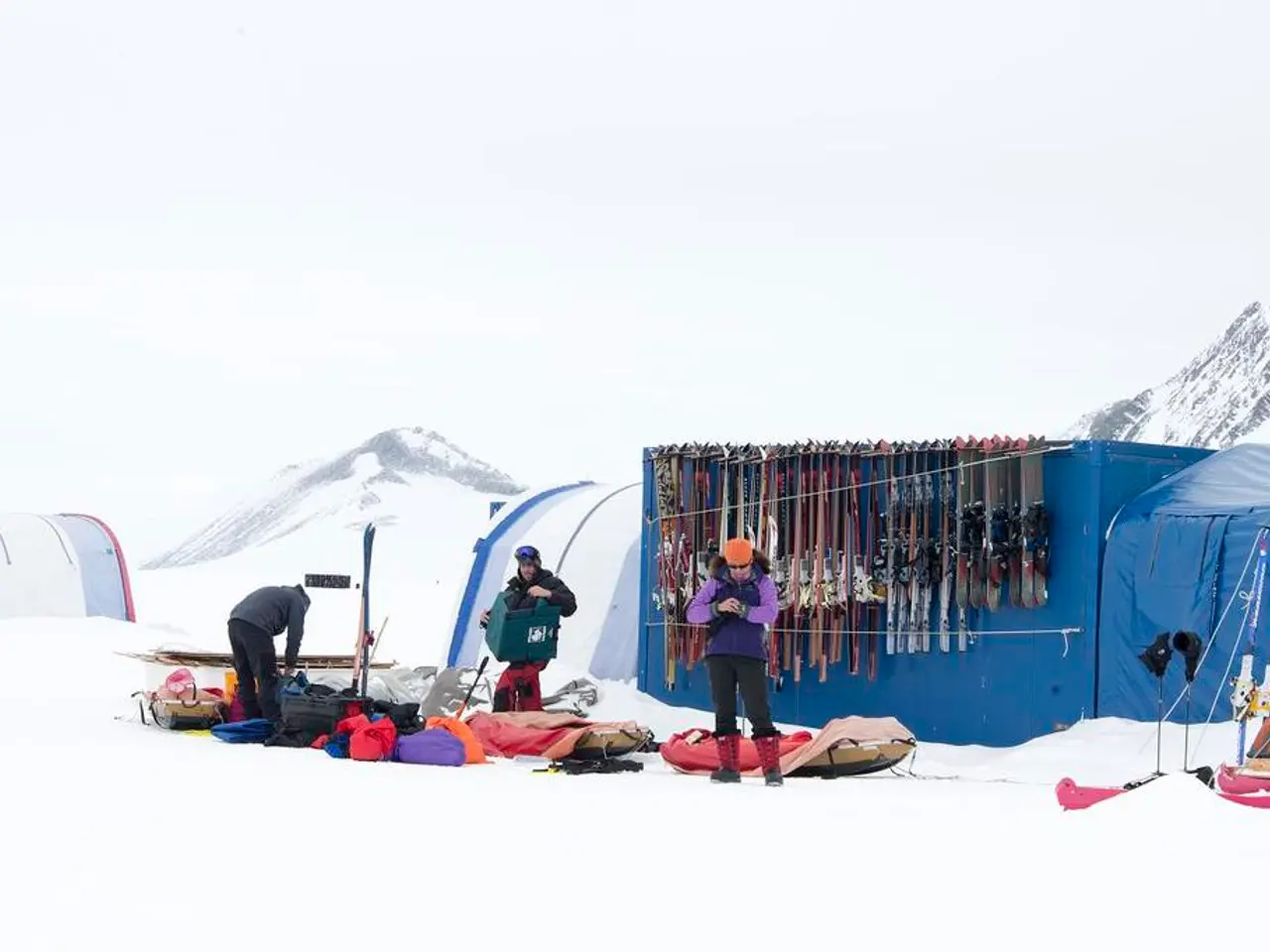Austrian Trek Rescue: Koblenz Family Successfully Navigated Perilous Journey
### Family Escapes Danger in Austrian Alps After Rescue Operation
A family of three, aged 56, 54, and 20, found themselves in a life-threatening situation while hiking in the Lower Tauern, Austrian Alps. The hikers from Koblenz were insufficiently equipped for the tour at this altitude, leading to a series of challenging events.
The family made an emergency call at an elevation of approximately 2,300 meters, and the mountain rescuers were quickly dispatched. However, the severe weather conditions and heavy rain and snowfall significantly hindered the work of the rescuers.
Despite the adverse weather, the rescuers managed to guide the family down the mountain using ropes. The family, who had luckily not sustained any injuries during the incident, were severely hypothermic and drenched after the rescue operation. It took six hours for the family to be brought to safety.
This harrowing experience serves as a reminder of the importance of proper tour planning when hiking in the Austrian Alps. The mountain rescuers urged all hikers to pay attention to the weather forecast before setting off and to ensure they are adequately equipped for the altitude.
Preparing for a hike in the Austrian Alps requires careful planning of equipment, weather considerations, and physical readiness. Here's a comprehensive guide to help you prepare:
#### Equipment Needs - **Clothing:** Pack thin fleeces, waterproof jackets, walking pants, shorts/skorts, sun hats, warm hats, and thin gloves. Wear comfortable, waterproof hiking boots or shoes with a good grip. Bring a sleeping bag liner for mountain huts. - **Equipment:** Use a 30-35 liter backpack with a waterproof cover. Walking Poles are optional but recommended for steep terrain. Bring a water container or hydration system. - **Miscellaneous:** Use a headtorch for early mornings or navigating in the dark. Earplugs are useful for better sleep in communal huts. A power bank keeps devices charged, and sunscreen and lip salve protect against high-altitude sun exposure.
#### Weather Considerations - **Season:** The best time to hike is from mid-June to late September, avoiding early June snowfields and ensuring cable car operations. - **Weather Gear:** Pack accordingly, including waterproof jackets and pants. - **Forecast:** Check weather forecasts before heading out to prepare for potential rain or snow.
#### Physical Readiness and Navigation - **Fitness Level:** Be prepared for long days with steady elevation and some steep climbs. - **Navigation:** Trails are well-marked with color-coded signs. Use a map or app like Komoot as a backup. - **Trail Etiquette:** Respect quiet hours and meal times at mountain huts, and remove boots before entering.
#### Additional Tips - **Documentation:** Carry your passport, travel insurance, and sufficient cash. - **First Aid:** Although guides often carry kits, it's good to have a basic personal first aid kit. - **Family Hiking:** Consider the fitness level of the children and plan stages accordingly.
By following these guidelines, you'll be well-prepared for an enjoyable and safe hiking experience in the Austrian Alps. It's always better to be safe than sorry, and with the right planning and equipment, you can make your hiking trip a memorable one.
The general-news of the family's close call in the Austrian Alps underscores the significance of proper equipment and weather considerations when embarking on a sports activity like hiking. Preparation should include waterproof clothing, a 30-35 liter backpack, walking poles, and a headtorch, among other items. Additionally, checking the weather forecast and physical readiness are crucial factors for an enjoyable and safe weather in the Austrian Alps.






